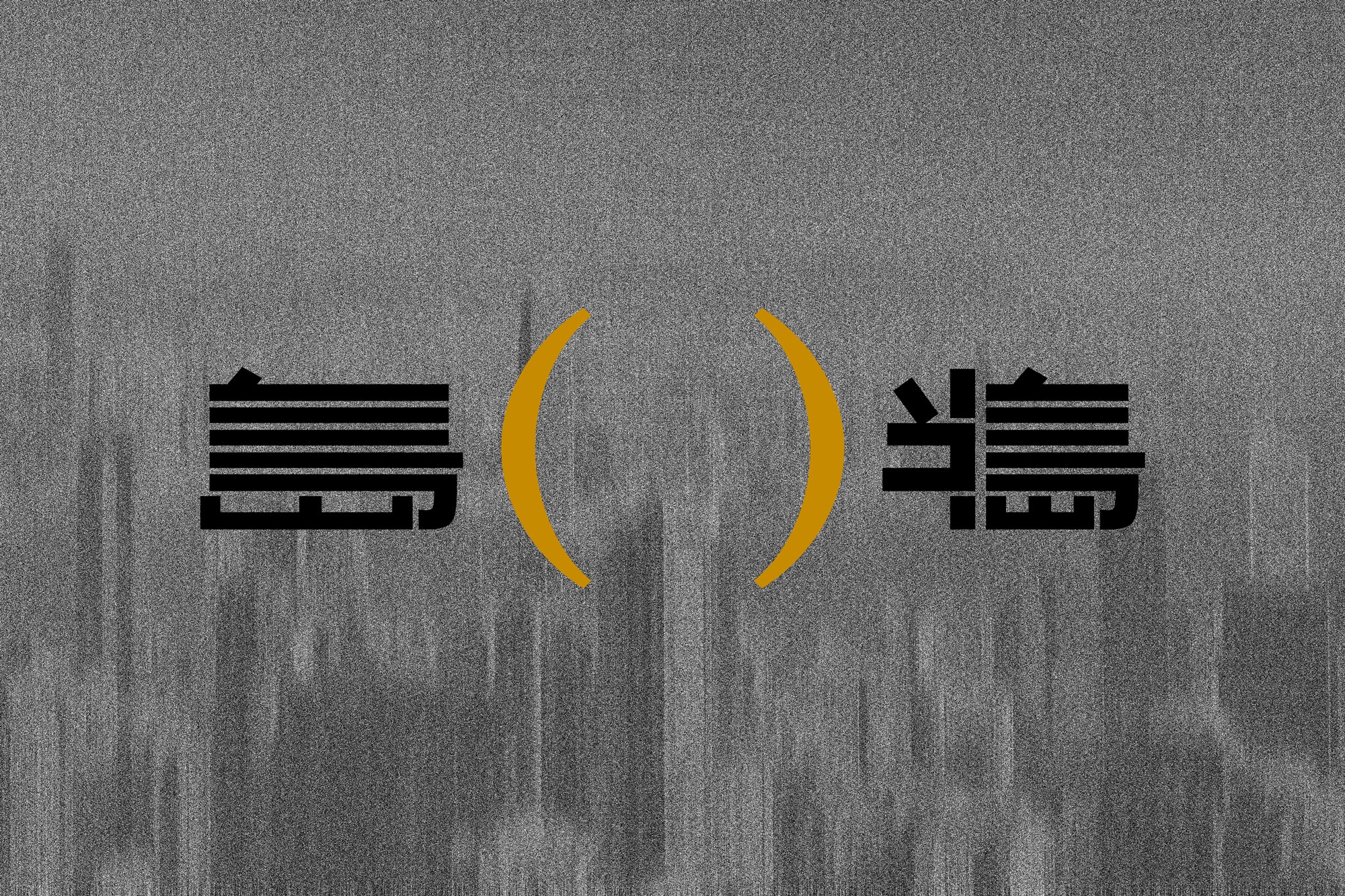
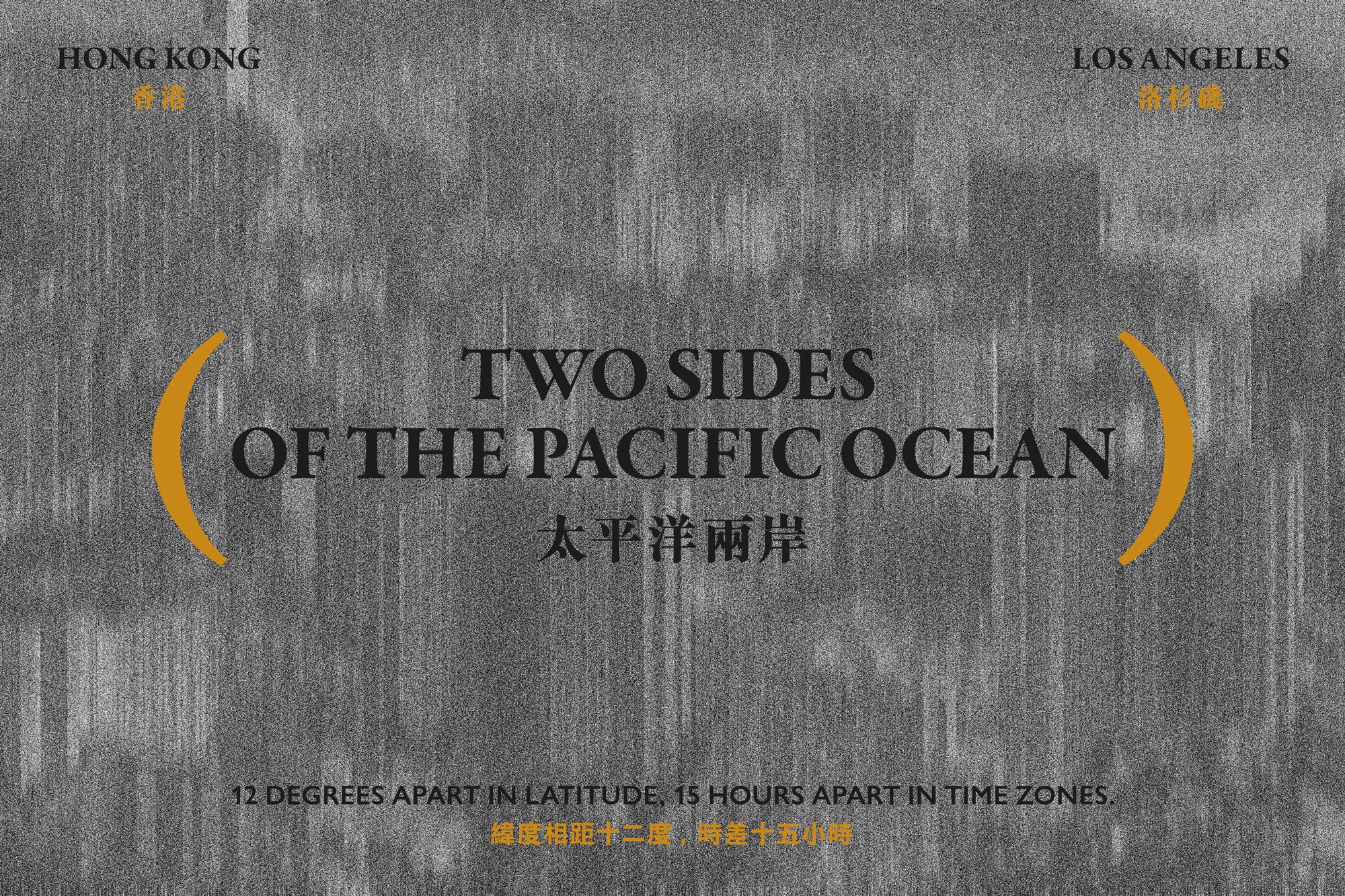

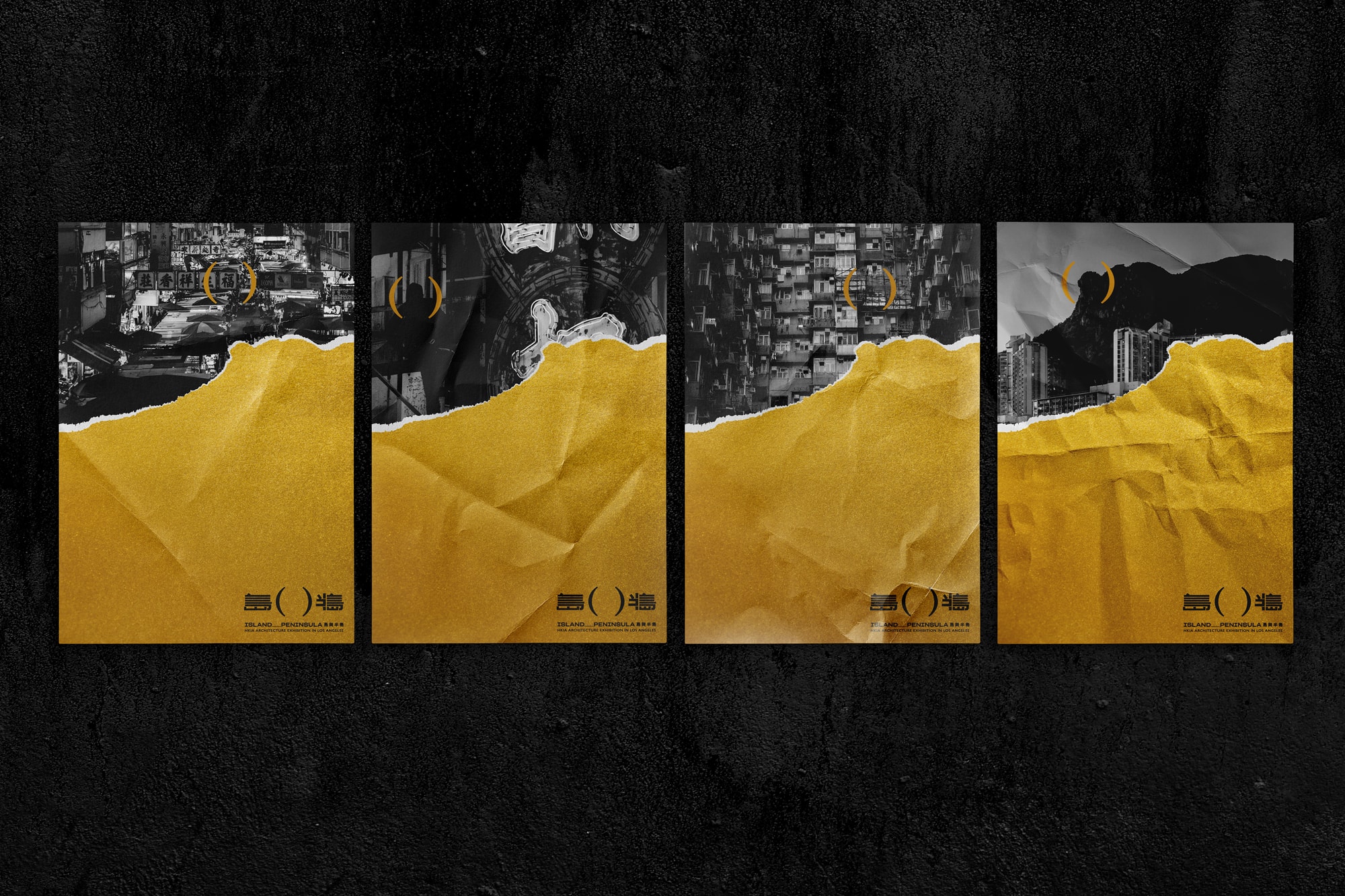

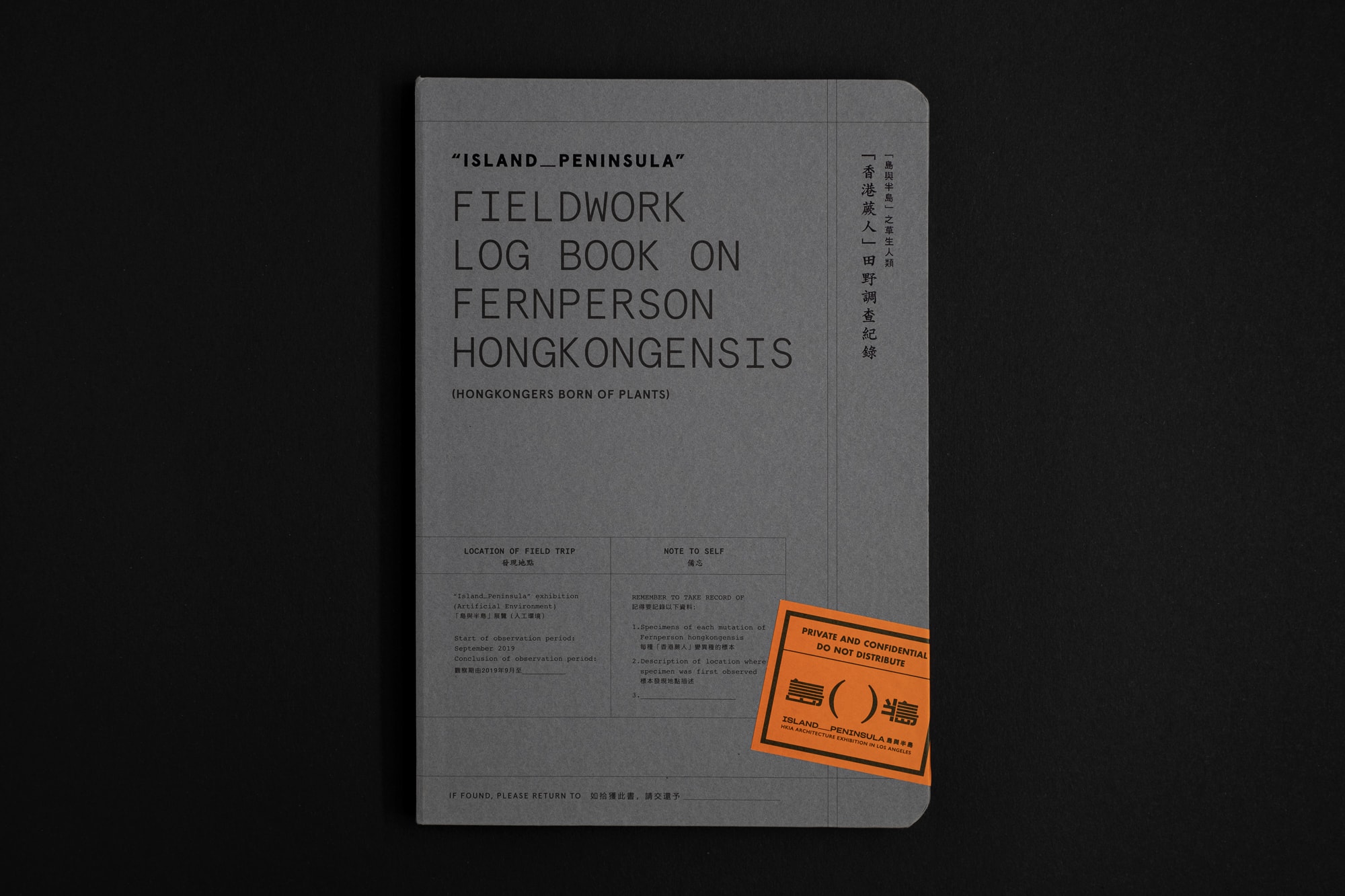
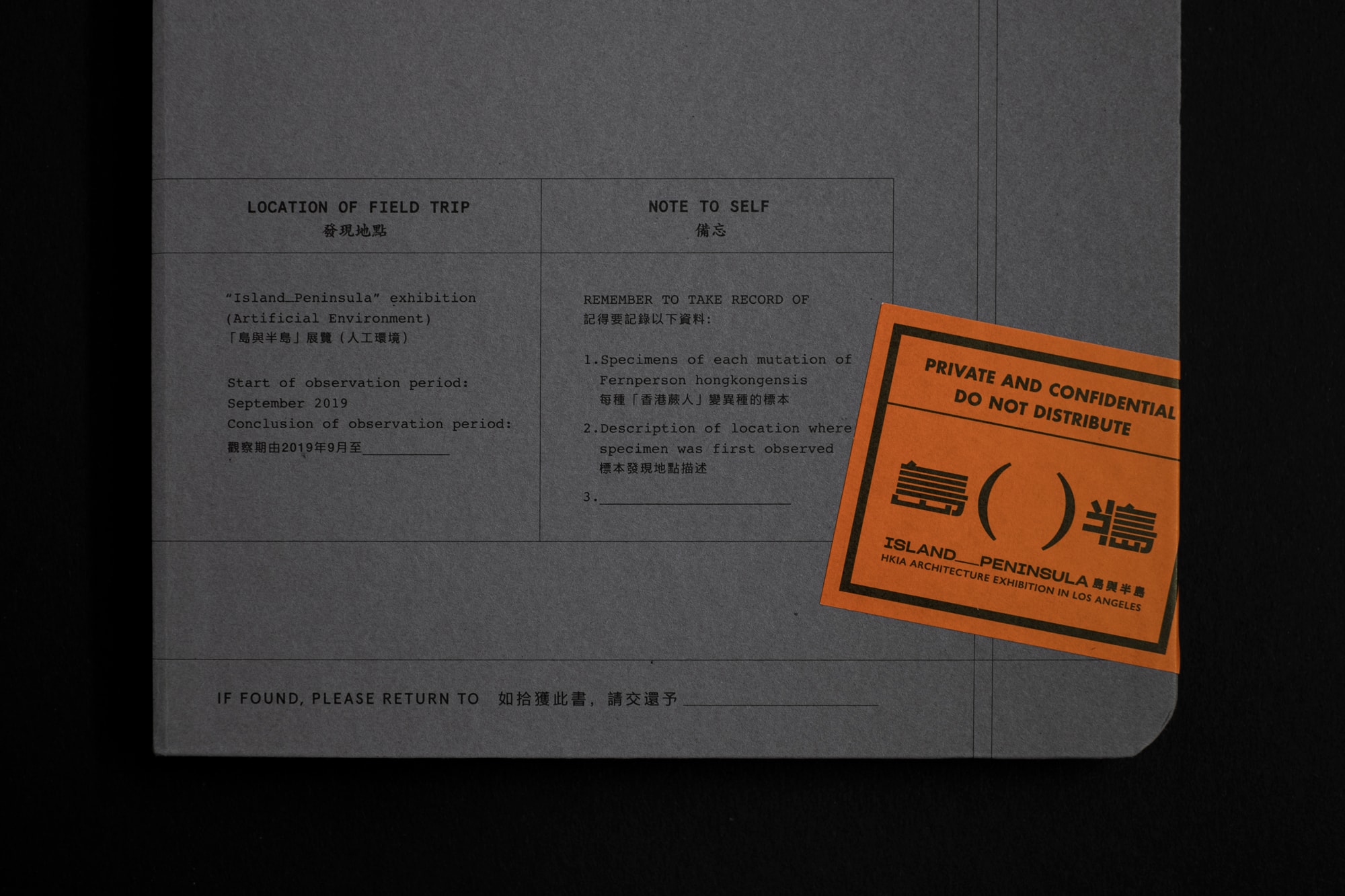
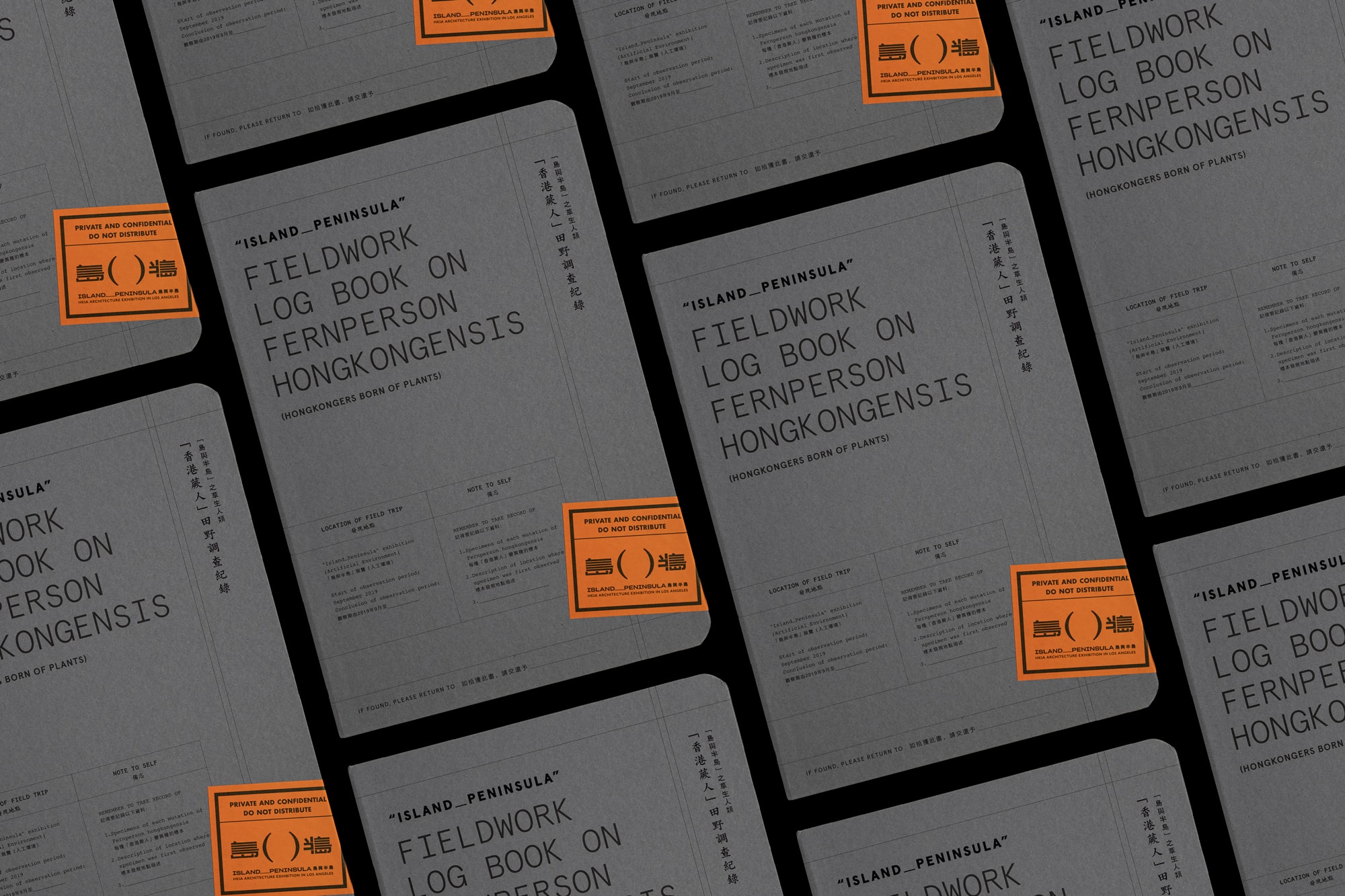
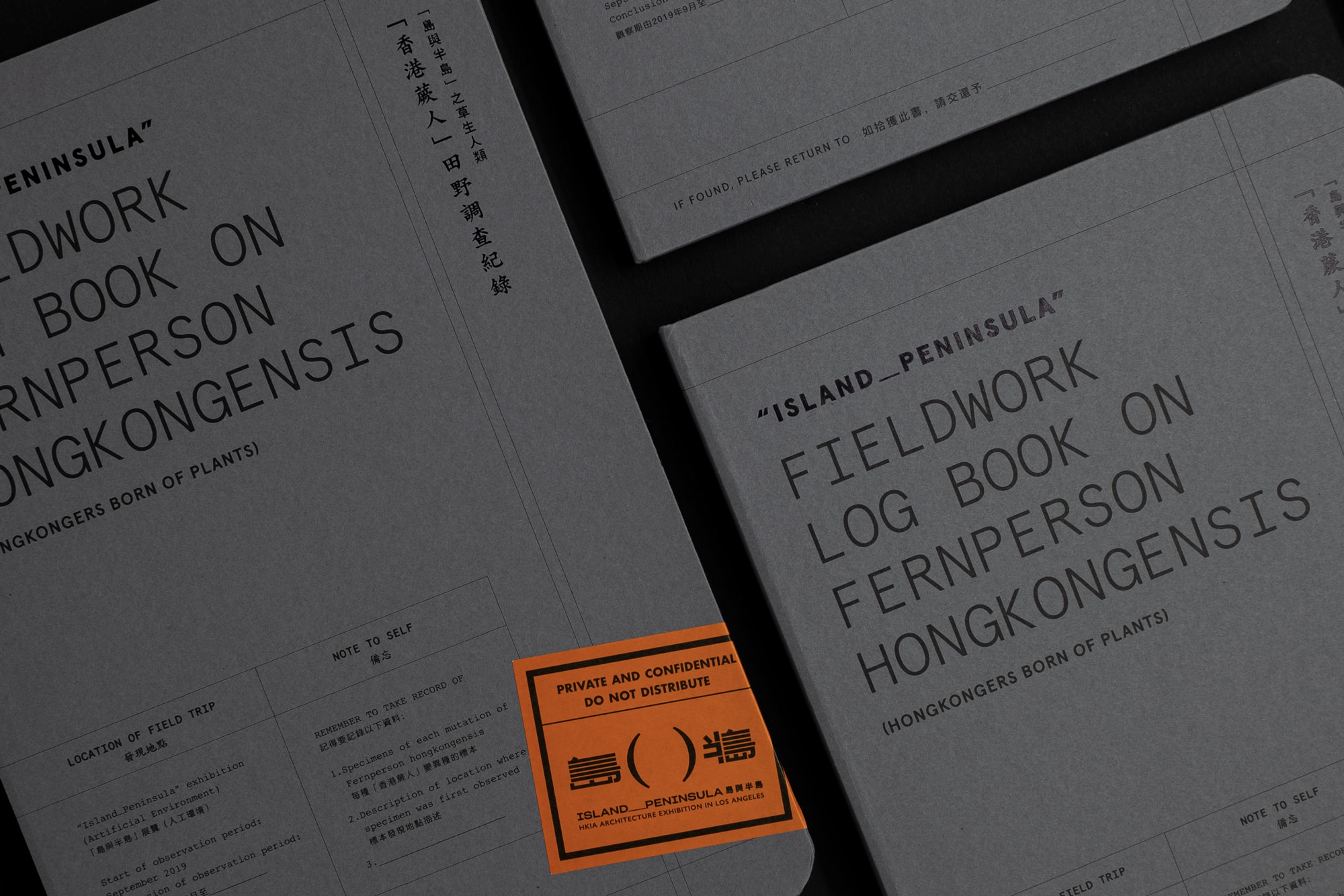
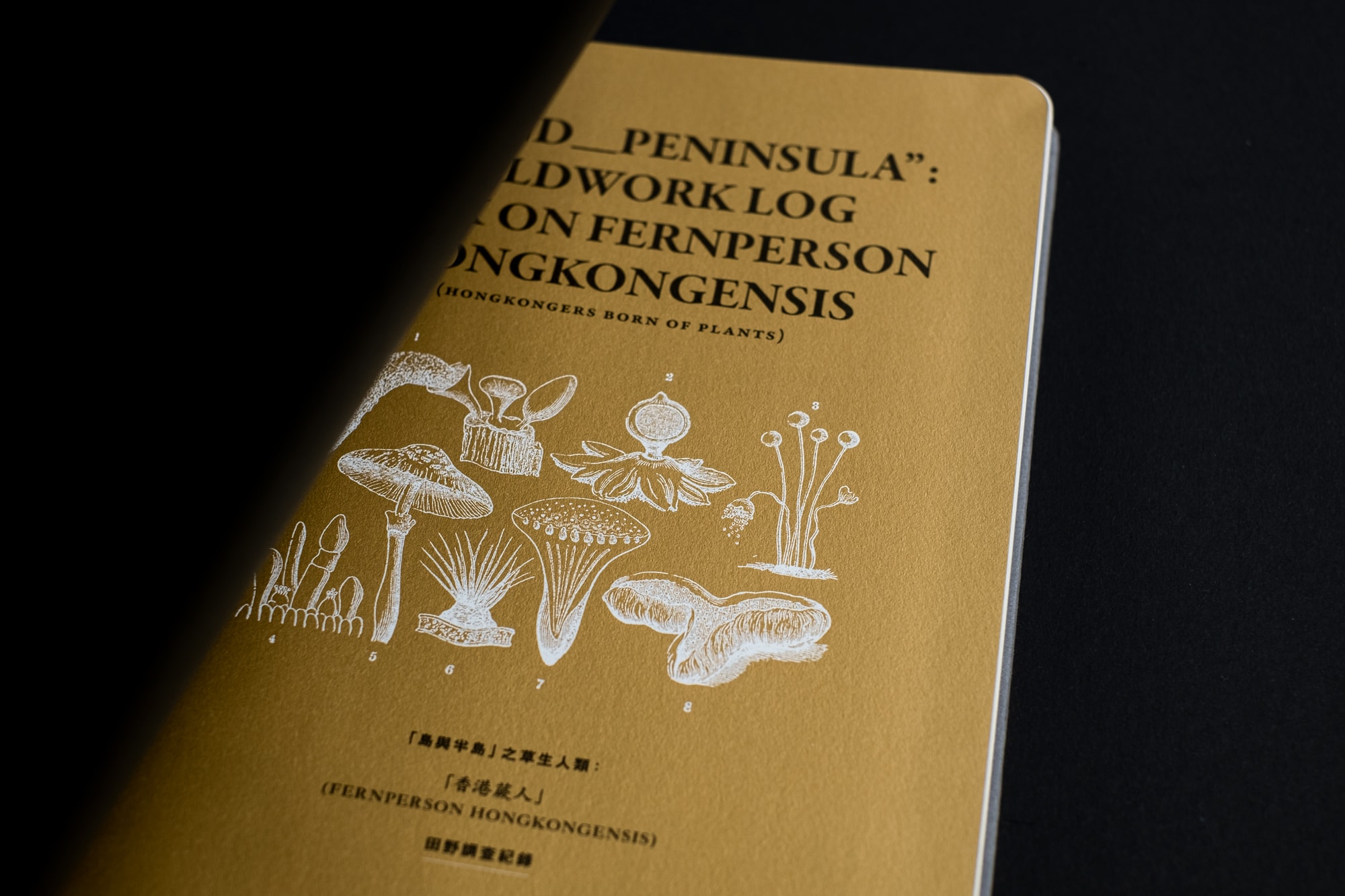
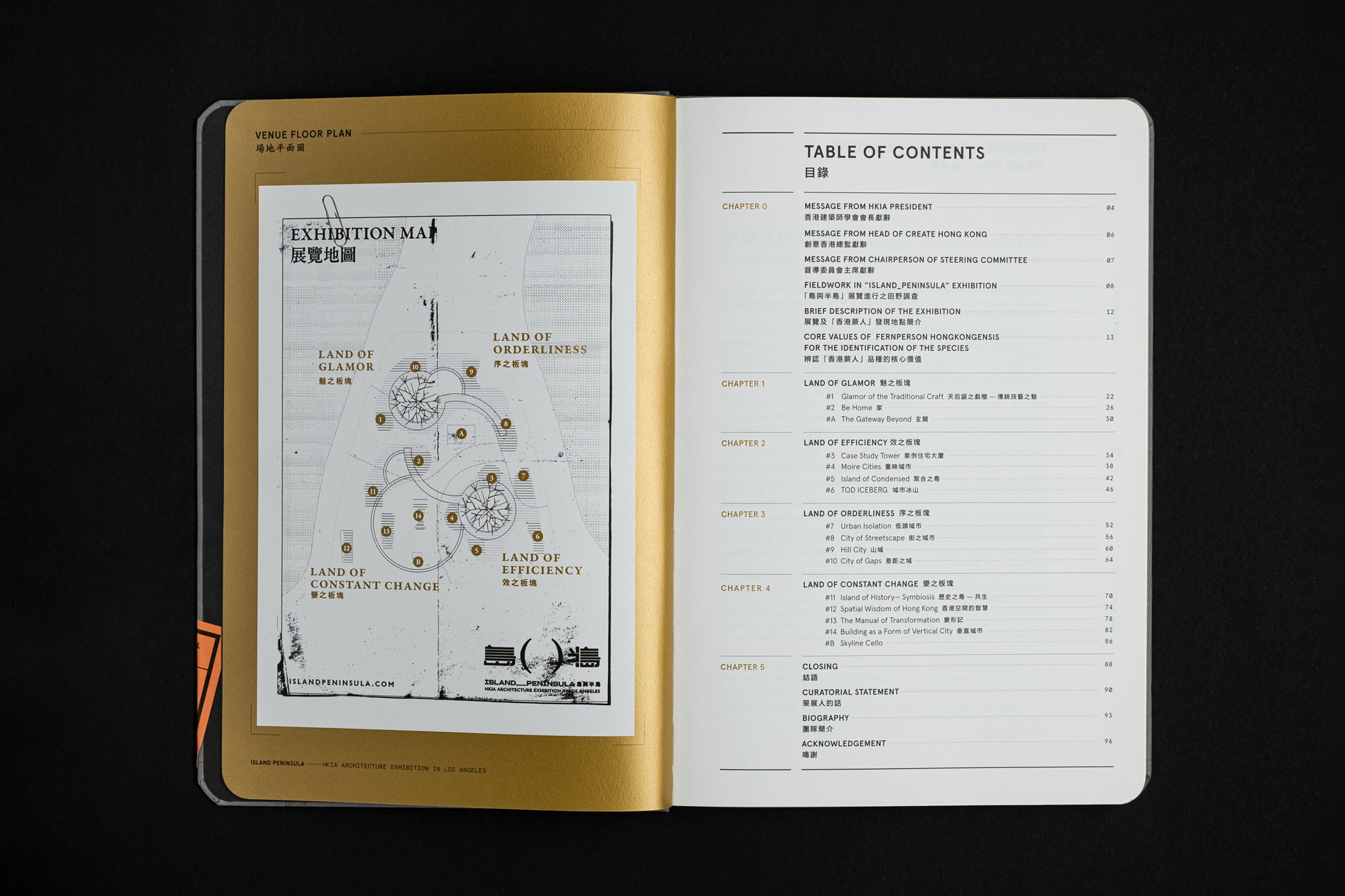
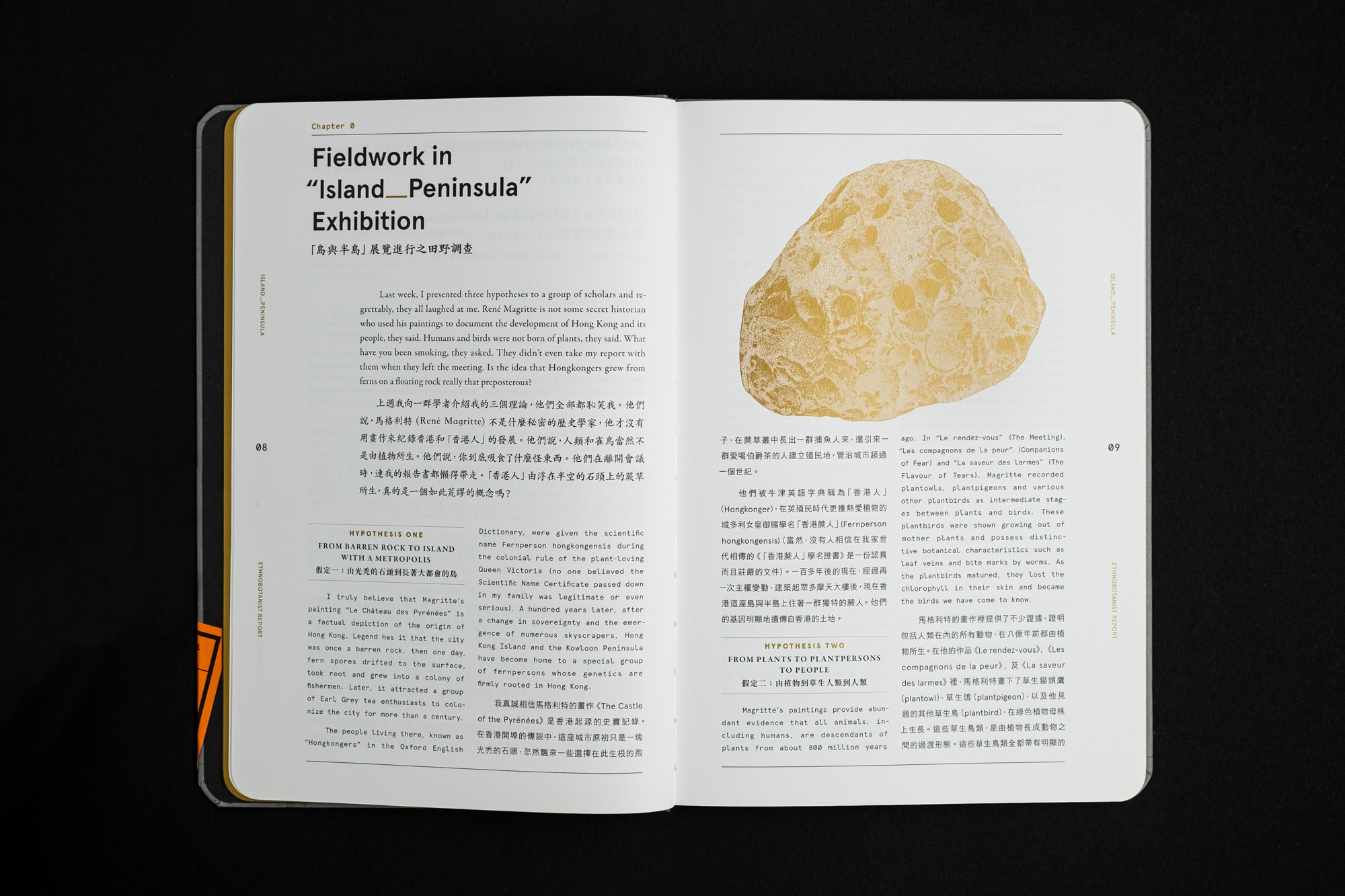
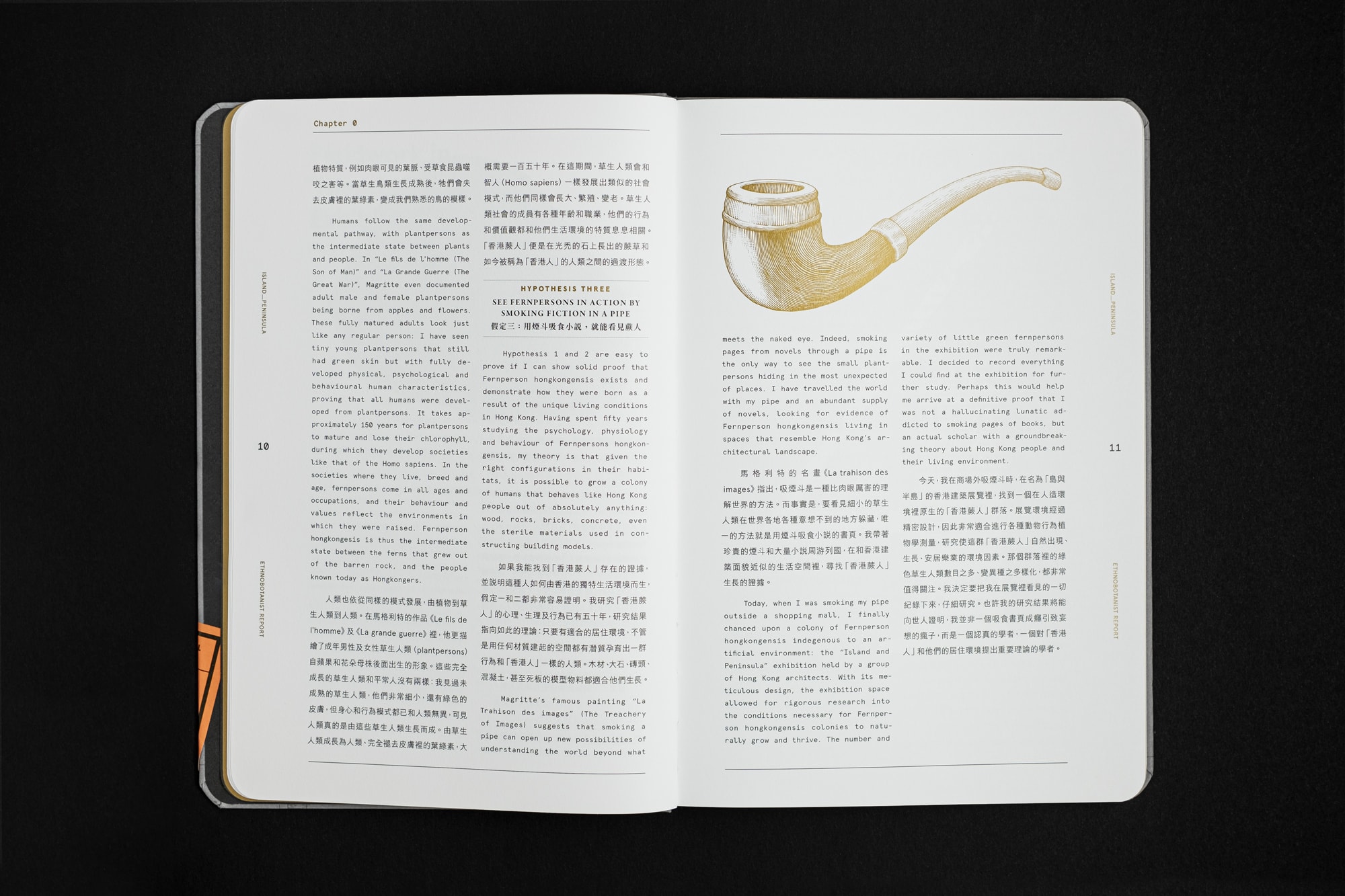

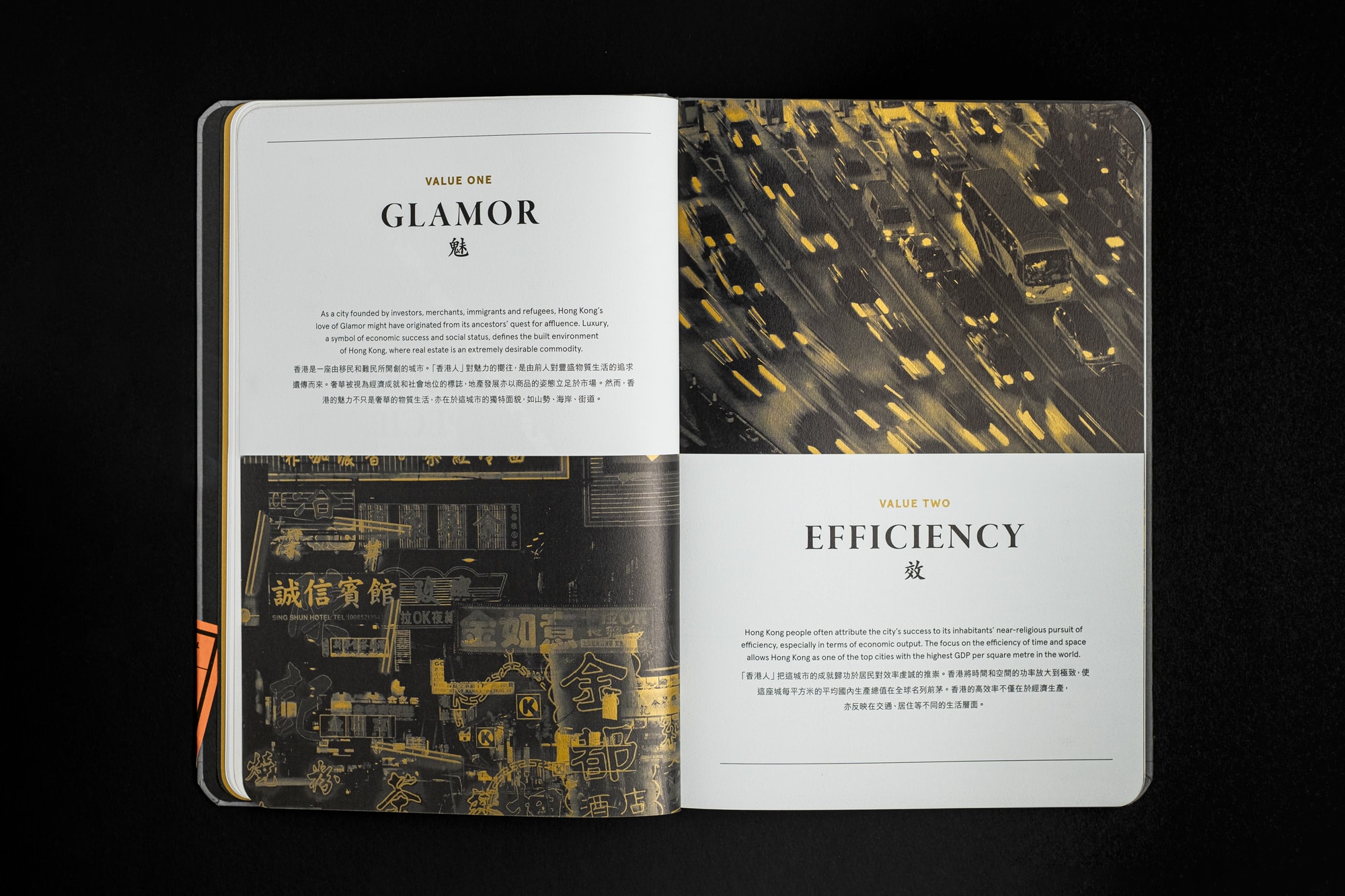
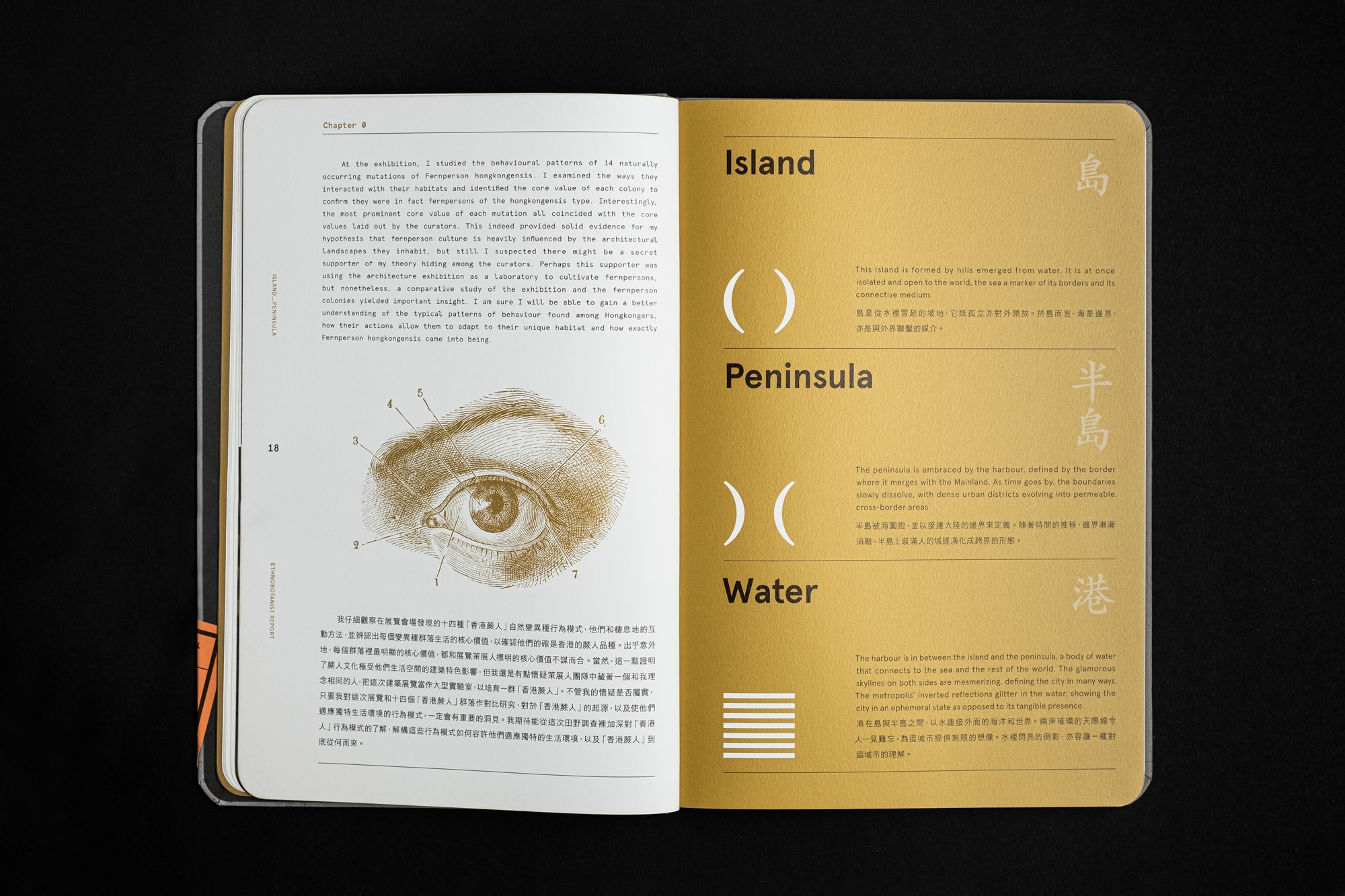
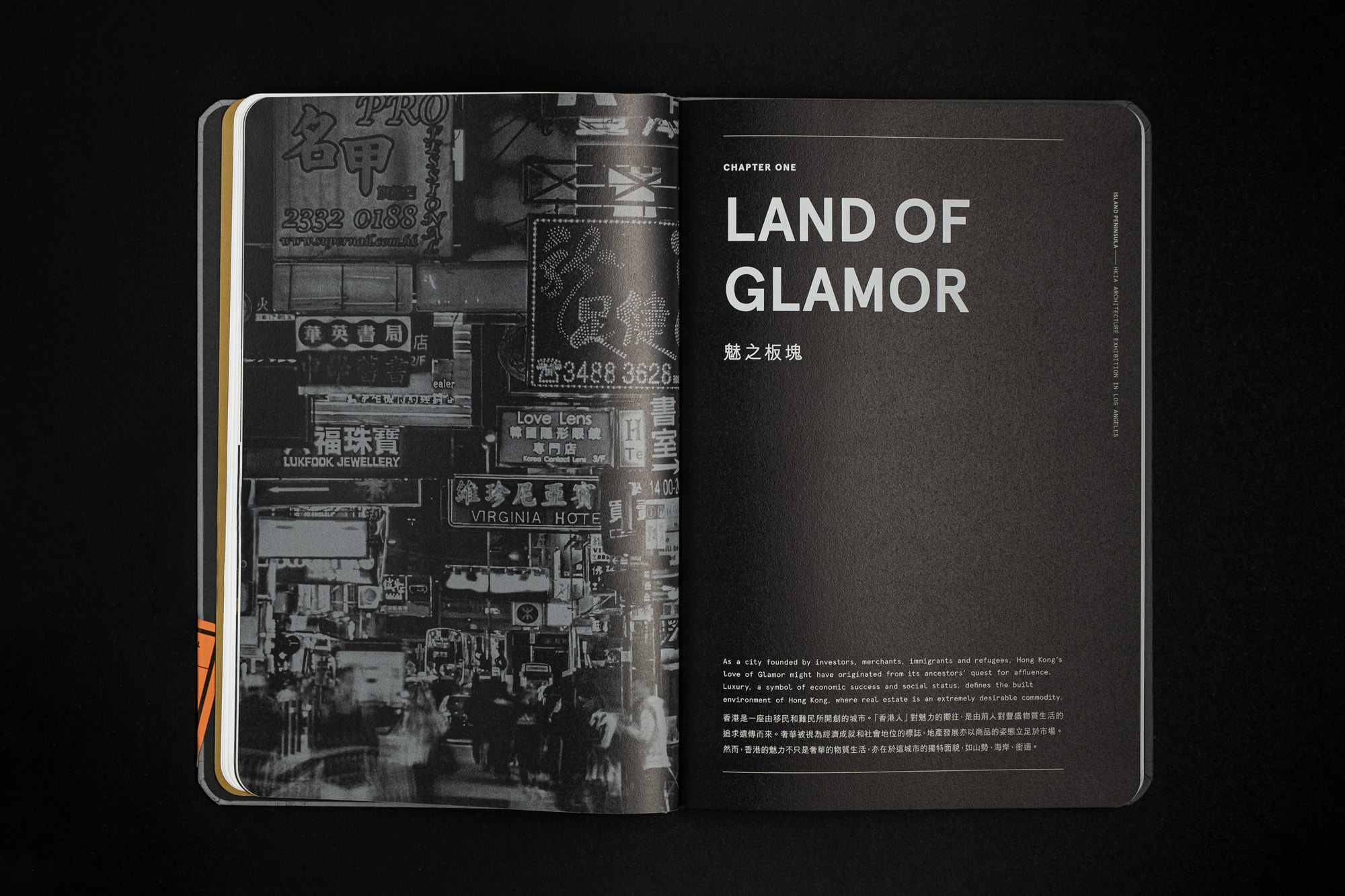
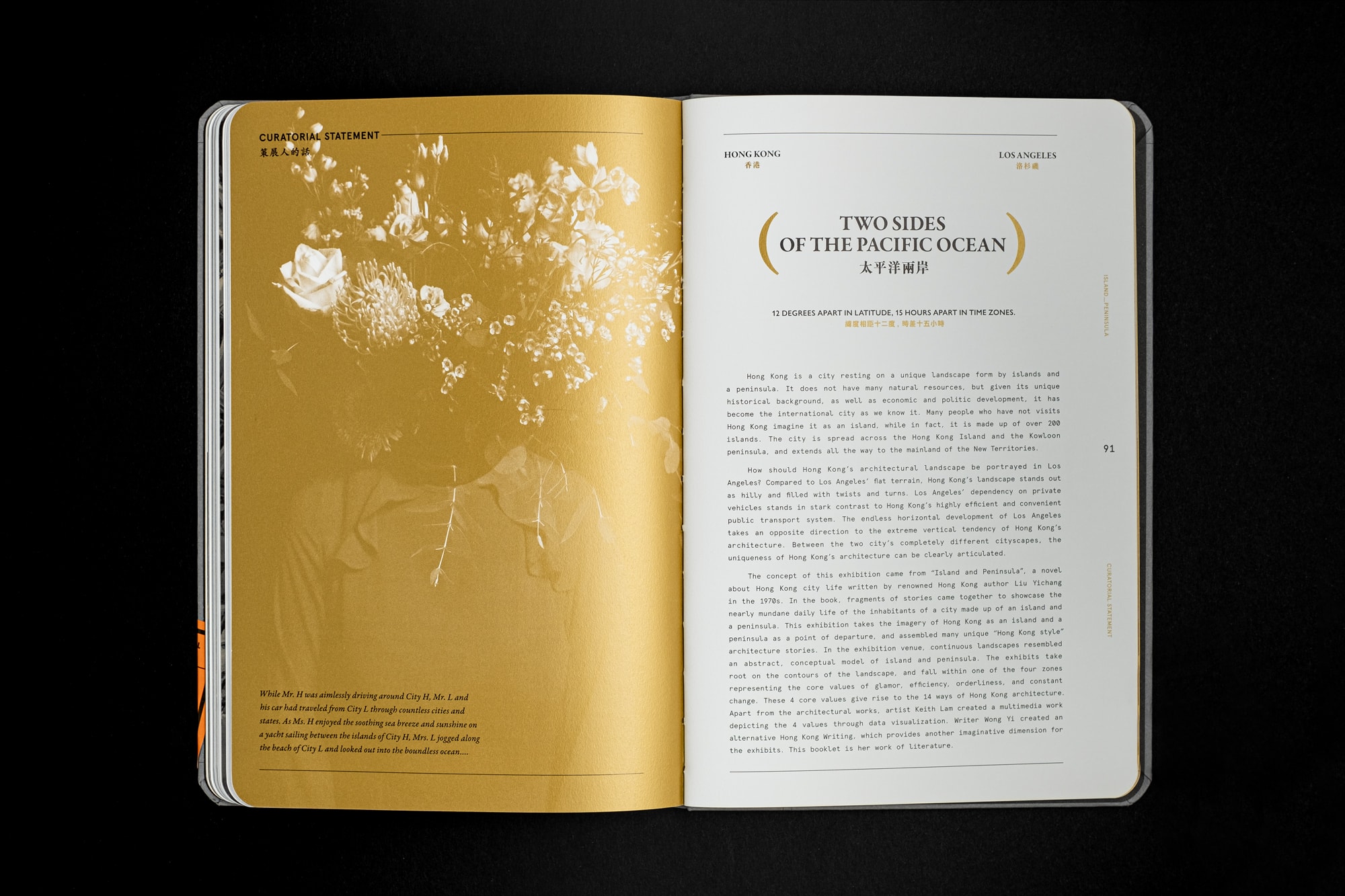
Island Peninsula
- Category Book Design, Exhibition, Identity
- Design Frank Lo
- Date Sep 2019
Hong Kong is a city resting on a unique landscape form by islands and a peninsula. It does not have many natural resources, but given its unique historical background, as well as economic and politic development, it has become the international city as we know it. Many people who have not visits Hong Kong imagine it as an island, while in fact, it is made up of over 200 islands. The city is spread across the Hong Kong Island and the Kowloon peninsula, and extends all the way to the mainland of the New Territories.
How should Hong Kong’s architectural landscape be portrayed in Los Angeles? Compared to Los Angeles’ flat terrain, Hong Kong’s landscape stands out as hilly and filled with twists and turns. Los Angeles’ dependency on private vehicles stands in stark contrast to Hong Kong’s highly efficient and convenient public transport system. The endless horizontal development of Los Angeles takes an opposite direction to the extreme vertical tendency of Hong Kong’s architecture. Between the two city’s completely different cityscapes, the uniqueness of Hong Kong’s architecture can be clearly articulated.
The concept of this exhibition came from “Island and Peninsula”, a novel about Hong Kong city life written by renowned Hong Kong author Liu Yichang in the 1970s. In the book, fragments of stories came together to showcase the nearly mundane daily life of the inhabitants of a city made up of an island and a peninsula. This exhibition takes the imagery of Hong Kong as an island and a peninsula as a point of departure, and assembled many unique “Hong Kong style” architecture stories. In the exhibition venue, continuous landscapes resembled an abstract, conceptual model of island and peninsula. The exhibits take root on the contours of the landscape, and fall within one of the four zones representing the core values of glamor, efficiency, orderliness, and constant change. These 4 core values give rise to the 14 ways of Hong Kong architecture. Apart from the architectural works, artist Keith Lam created a multimedia work depicting the 4 values through data visualization. Writer Wong Yi created an alternative Hong Kong Writing, which provides another imaginative dimension for the exhibits.
- Category Book Design, Exhibition, Identity
- Design Frank Lo
- Date Sep 2019